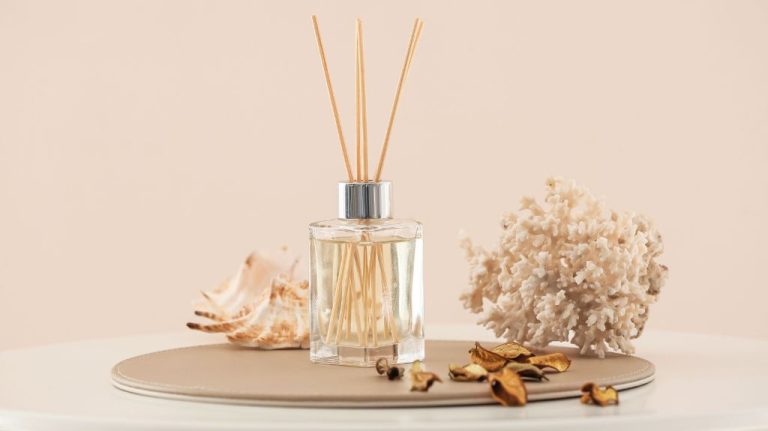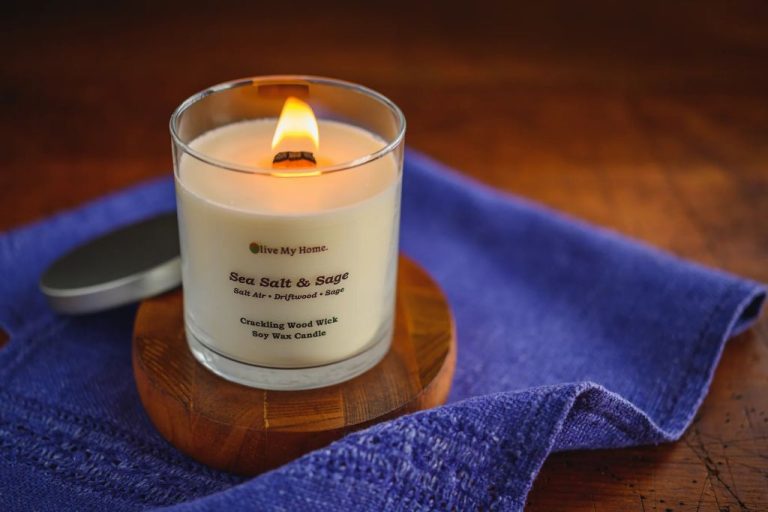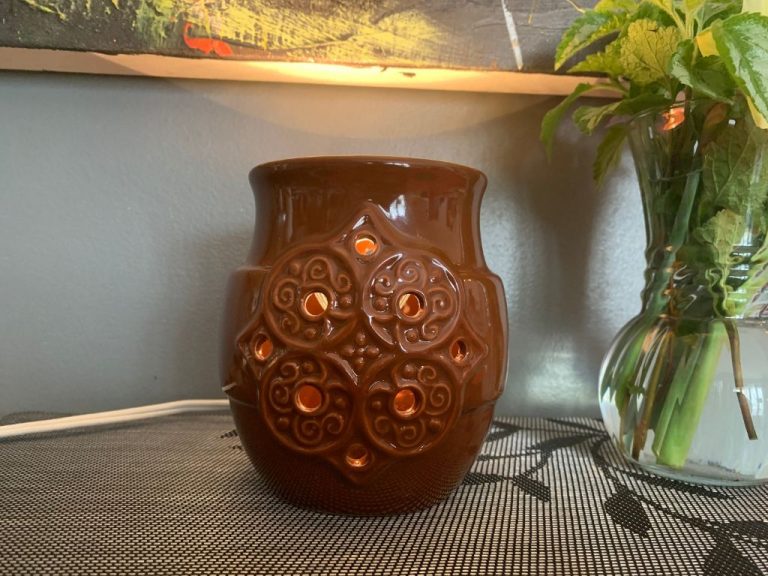How Hot Do Candle Warmer Plates Get?
How Candle Warmers Work
Candle warmers are electric devices that gently heat scented wax to release fragrance. They consist of a base unit that plugs into a standard wall outlet, and a removable dish or plate that sits atop the base. The plate is heated from below by the warmer’s electric heating element.
Candle wax or scented wax melts are placed into the heated plate, where they slowly warm up and melt just enough to liquify the surface and release fragrance. The wax never reaches a full melt or burns like a lit candle, allowing the wax to last longer. Candle warmers provide ambient scent without the safety risks and mess of burning candles.
Plate Materials
Candle warmer plates come in a variety of materials, each with their own advantages and disadvantages:
Ceramic – Ceramic plates heat up quickly and evenly. They are durable and retain heat well. However, they can crack or chip if dropped. Ceramic is prone to staining from candle dyes.
Glass – Glass plates allow you to see the candle while melting. They don’t retain odors. However, glass is prone to breaking and doesn’t retain heat as well as ceramic. Temperature changes can cause the glass to crack.
Metal – Metal plates like aluminum and steel heat up fast. They are durable and conduct heat well. However, they can get very hot. Bare metal may discolor or corrode over time without a protective coating.
Plate Temperatures
Candle warmers use heated plates to melt candles from below. The plate temperature will depend on several factors:
- Plate material – Ceramic plates heat up the most, reaching temps of 140-200°F. Metal plates often range from 120-180°F. Plastic and silicone plates tend to be cooler, from 100-160°F.
- Plate design – Thicker plates retain more heat than thin ones. Smaller surface areas concentrate heat better. Grooves, ridges and other textures can impact heat flow.
- Heating method – Warmers with electric heating coils/elements produce more direct heat than battery-powered ones. Being plugged in also maintains higher & more consistent temps.
- Candle type – Paraffin candles with low melt points (around 115-130°F) require less heat than higher melt point candles like soy (140-160°F).
- Melting status – It takes more heat initially to melt a frozen candle. Once liquid wax pools, the plate doesn’t have to be as hot.
In general, ceramic warmers often reach 160-200°F, enough to melt most candle types. Metal and plastic plates range from 100-180°F depending on design. Silicone is often 160°F or less. Monitoring melt status allows adjusting temps accordingly.
Safety Concerns
Candle warmers can reach high temperatures, so it’s important to use them safely to avoid potential burns or fire hazards. The hottest area is right above the light bulb where the plate sits. Touching this area before it cools down can cause serious finger burns. It’s best to avoid contact with the plate until it has fully cooled.
Another safety concern is knocking over a lit candle warmer. The bulb could ignite nearby combustible materials like curtains or furniture. Situate your warmer on a sturdy, level surface away from anything flammable. Never leave a candle warmer unattended for long periods.
To prevent accidents, keep warmers out of reach of children and pets. Make sure the cord is not dangling where it could be pulled. Only use warmers as intended by the manufacturer, and follow all included safety precautions.
With some simple precautions, candle warmers can be used safely. Allow time for cooling before handling, keep flammables at a distance, and don’t leave a hot warmer unattended. Treat your warmer with care and enjoy the scents safely.
Melting Points
The melting points of candle wax, oils, and other materials used with candle warmers is an important factor when considering plate temperatures. Most candle waxes have melting points between 120-150°F. Paraffin wax, one of the most common candlemaking waxes, melts at around 130-145°F. Beeswax has a slightly higher melting point of 140-150°F. Soy wax and vegetable-based container candle waxes melt around 115-125°F.
Essential oils and fragrance oils used in candlemaking and wax melts have even lower melting points, usually well under 212°F (the boiling point of water). This means the oils can evaporate at much lower temperatures than wax. Citrus and herbaceous essential oils tend to have lower melting points while woody and floral oils are higher.
When the plate temperature exceeds the melting point of the wax or oils, melting will occur. Most candle warmer plates maintain temperatures between 120-150°F in order to melt most common waxes without posing as large of a safety risk as higher temperatures.
Factors That Affect Temperature
There are several factors that can impact how hot a candle warmer plate gets during use:
Candle Type
The type of candle being used on the warmer makes a difference. Container candles, votives, and tealight candles all burn at different temperatures and intensities. This affects the amount of heat being transferred to the plate.
Burner Style
Candle warmers come in both open and enclosed burner styles. Enclosed burners tend to raise plate temperatures higher by concentrating the heat.
Plate Material
Warmer plates can be made from various materials like metal, ceramic, or glass. These all conduct heat at different rates, resulting in varying plate temperatures.
Size of Plate
Larger plates distribute heat over a wider area and may not get as hot as smaller, more concentrated plates.
Melting Point of Item
The melting point of the item being warmed is also a factor. Lower melting point items like wax and lotions heat up faster than higher melting point items like ceramic and glass.
Room Temperature
Ambient room temperature can impact plate heat. Warmer plates may run hotter in a cool room versus a warm room.
Using Warmers Safely
Candle warmers can reach high temperatures, so it’s important to use them safely to avoid injuries or damage. Here are some tips:
Placement: Don’t place warmers near flammable items or surfaces. Allow ample space around the warmer for airflow and cooling. Avoid positioning where pets or children could accidentally knock it over.
Supervision: Never leave a candle warmer unattended for an extended period. Periodically check to make sure it’s functioning properly and not overheating.
Warning labels: Pay attention to any warning labels on your warmer about maximum temperature or recommended operation. Follow all manufacturer guidelines.
Preventing issues: Don’t overfill wax melts so melted wax doesn’t overflow. Use a warmer plate cover if included. Clean up spilled wax to avoid pooling around the warmer. Unplug when not in use.
Taking simple precautions allows you to enjoy candle warmers safely. Always monitor warmers when in use and exercise caution around the high heat they generate.
Alternatives to Candle Warmers
If you are concerned about the safety of candle warmers, there are some alternative products that can keep food and beverages warm without an open flame or hot plate. Here are a few options to consider:
Electric Warmers
Electric warmers use a heating element to gently heat plates, bowls, and mugs. Models are available in a variety of styles, including buffet servers, fondues pots, and individual mug warmers. These provide targeted warming without an open flame.
Crockpots
Crockpots or slow cookers allow you to cook soups, dips, and drinks on a heated element with a regulated temperature. The lid keeps the heat circulating and contents warm until ready to serve. Many models have a warming function for keeping cooked foods hot.
Fondue Pots
Fondue pots feature a container suspended above a safe, enclosed heating element. This allows you to cook, heat, and dip foods in a regulated, self-contained unit. Fondue pots provide gentle, even heating for keeping cheese, chocolate, and oil based fondues warm for dipping.
These types of electric products provide alternatives to candle warmers for keeping food and drinks at optimal temperatures. They eliminate worries about open flames while still letting you enjoy heated items safely.
Comparisons
Candle warmers provide gentle, even heating compared to burning candles directly. The open flame of a burning candle can reach high temperatures very quickly, creating more risk for fire or burns. Candle warmers allow you to experience the candle fragrance safely contained under the plate.
Similarly, candle warmers are much cooler than heated oil diffusers. While diffusers also heat essential oils to release their scent, the heating element is submerged directly in the oil. This direct contact allows the oil to get very hot. Candle warmers contain only the heat needed under the plate, without directly touching the candle wax.
Lastly, candle warmers are more energy efficient than burning candles. Burning candles consumes the wax, requiring more candle purchases over time. With warmers, the candle wax lasts longer since it melts and solidifies repeatedly. Warmers use less energy than a continuously burning candle flame.
Conclusion
Candle warmer plates can get hot enough to pose a safety risk. The exact temperature depends on the material and design of the plate, as well as the size and type of candle used. But most standard plates will reach temperatures between 135-180°F when in use. While this heat is necessary to melt wax and release fragrance, it’s also hot enough to burn skin in just seconds. Proper precautions are essential, like keeping plates out of reach of children and pets, avoiding contact with bare skin, and never leaving a burner unattended.
The convenience of candle warmers makes them popular. But they must be treated with care, like any device that generates high heat. By using common sense and following safety guidelines, candle warmers can be enjoyed safely. It’s also wise to consider lower temperature alternatives, like reed or electric diffusers, for homes with kids and pets. In the end, fragrance should never come at the cost of safety.





